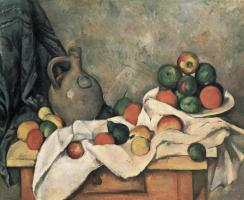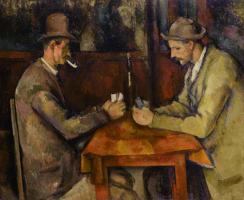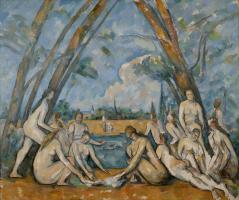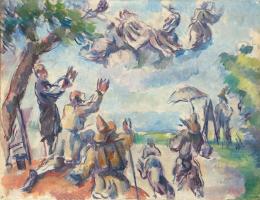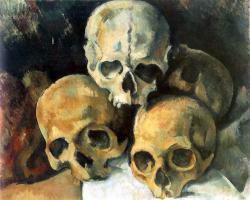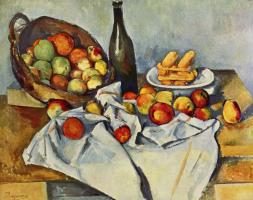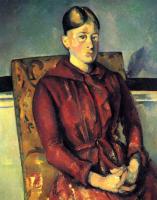Paul Cézanne
The work of Paul Cézanne has had such a far-reaching influence that he has been called the father of modern painting. It was not until the end of his life, however, that his genius was widely recognized. In the year after his death a major exhibition of his work was held, which startled the world.
He was born in Southern France, the son of a wealthy banker, but much of his working life was spent in Paris, where he mixed with all the Impressionist painters of his day. He was a shy, irritable man who, after a discouraging start in the early 1860’s — a forbidding father, examination failure and Salon refusals — scarcely seemed destined for lasting recognition.
Acclaim was hard won, taking over thirty years of disciplined work before his first one-man exhibition in 1895; following which, younger artists like the Nabis formed an enthusiastic clique, alert to Cézanne’s pushing of the boundaries beyond airy Impressionism. Whereas other artists in the group sought to capture rapidly changing light and colour, Cézanne’s greatest achievement lay in exposing in planes of colour the underlying shapes in nature, which he believed to be the sphere, the cylinder and the cone.
Cézanne knew that the theories of Parisian academics and critics, let alone public opinion, were not sympathetic to his ideal of “the logical development of everything we see and feel through the study of nature”. It was his desire for this essential harmony, expressed by colour as tone, which drew him back to his beloved Provence in 1882.
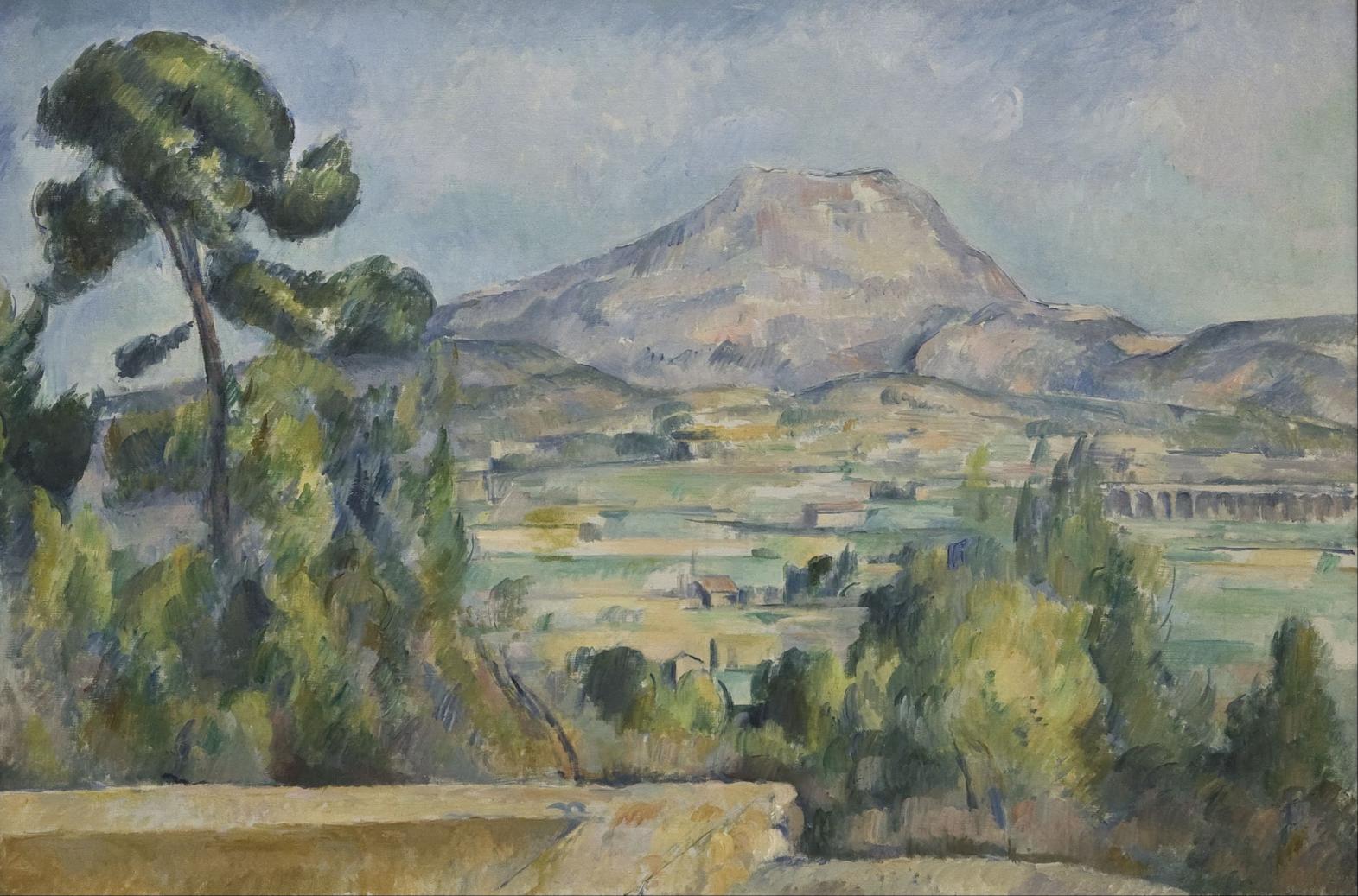 He applied this analysis of structure to La Montague Sainte-Victoire, a scene
in his native Provence. The greens and terracottas in the foreground fade
almost imperceptibly into the pale blues and pinks of the distant rocky
mountains, yet each individual area is made up of separate geometric slabs of
colour carefully worked together to form the shapes in the landscape.
He applied this analysis of structure to La Montague Sainte-Victoire, a scene
in his native Provence. The greens and terracottas in the foreground fade
almost imperceptibly into the pale blues and pinks of the distant rocky
mountains, yet each individual area is made up of separate geometric slabs of
colour carefully worked together to form the shapes in the landscape.
The sharply defined outline of the mountain is framed by the branches of two Mediterranean pine trees, the fields and houses set out in such a way that the eye is guided through the painting to the Roman aqueduct in the middle distance, and on to the peak of the mountain itself. The horizontal planes are perfectly balanced by the vertical tree trunk on the left and the tower of the building beyond it. The effect of distance is emphasized by the scale of the foreground trees, but somehow the mountain’s bare surface seems to loom towards us and dominate the peaceful cultivated scene.
Cézanne painted this landscape many times, and this calculated, finely balanced picture reveals his intimate familiarity with his subject.
He became the most important of the Post-Impressionists, who concentrated in a rigorously disciplined way on form and outline. In his technique of exposing the structural shapes in nature he was also the forerunner of Cubism, which was fully developed by Picasso and Braque. He was greatly respected and admired by his fellow artists, and is generally considered now to be one of the most brilliant painters of the last hundred years.


